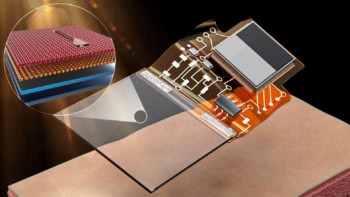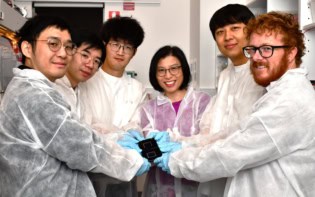Physicists have made a new type of laser by combining a quantum cascade laser with a photonic crystal. Raffaele Colombelli of Bell Labs in the US and colleagues say that their novel proof-of-concept device could find use in sensing applications and fundamental research in optics (R Colombelli et al. 2003 Sciencexpress 1090561).
Conventional semiconductor lasers emit photons when electrons in the conduction band and holes in the electron band recombine. The wavelength or energy of the photon is determined by the energy difference between the conduction and valance bands – which is a fundamental property of the semiconductor.
Quantum cascade lasers, on the other hand, emit light when electrons fall from a higher to a lower energy level in a quantum well. Since the quantum well can contain a whole series of levels, the same electron can emit a large number of photons as it cascades down through the levels. Moreover, the wavelength depends on the width of the quantum well which means that photons of more than one wavelength can be emitted by the same device. However, quantum cascade lasers can only emit light in certain directions and cannot emit vertically from the semiconductor surface.
Using dry etching and lithography, Colombelli (now at the University of Paris-Sud) and colleagues have now embedded a tiny photonic crystal – a material that only transmits certain wavelengths of light – in the active region of a quantum cascade laser. The photonic crystal acts as a microcavity that provides feedback for laser action when an electric current is applied. Moreover, the cavity diffracts light vertically from the semiconductor surface so that the new device can emit light in the vertical direction.
The researchers say that such devices could be used to make large arrays, where each laser emits at a different wavelength, for chemical sensing and optoelectronics applications. They now hope to improve the performance of the new devices so that they will work as well as standard quantum cascade lasers.



